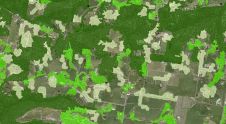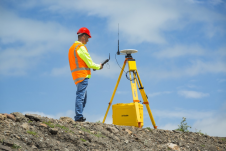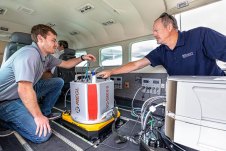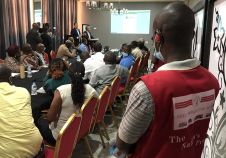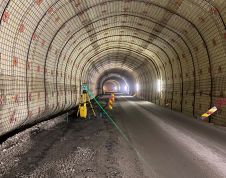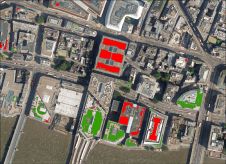GIS is in the Game-changing Business
This year we are seeing some big changes in our industry that will affect us all. These come from our own maturing technologies such as unmanned aerial vehicles, integrated LiDAR and video processing systems; from developing government policy on long-established institutions such as Ordnance Survey and the Land Registry; from regional and global co-operation under the auspices of the EU and the UN; and from other industries such as computer games and construction.
We cover many of these in this edition with reports from GeoBusiness 2014 in London, the INSPIRE conference in Aarlborg, and the Esri UK conference. We also have a preview of the exciting, new format AGI GeoCom 2014 event in November following the success of the Big 5 series of events of which two are still to come – on Big Data in London in September and on Policy in Cardiff in October.
Feature articles this time include the use of GI to help market and install 3D Holographic RadarTM to mitigate the effect of wind turbines on air traffic control radar and a unique database of car parks in the UK, now being extended to the US and the rest of Europe. We have two very different examples of the convergence of GI with the computer gaming industry. A Danish example of the use of real topographic data in Minecraft and an Irish company which is revolutionising the visualisation of town and country planning by combining 3D digital mapping, imagery from airborne or surface sensors with the most sophisticated software from the gaming industry – the game-ification of GIS! Perhaps a game engine will win the new AGI Best Geospatial Visualisation Award?
我们不是回到三recu道歉rring items. We have a plea from several companies in the GI software and services ‘space’ who take exception to Ordnance Survey setting up its GeoIntelligence ‘solutions’ business. And we have the Ordnance Survey’s official reply that more or less implies that it is increasing the size of the cake thus benefiting everyone in the industry. We note in our news section that two of the companies have just won a three-year contract to fly aerial imagery of Great Britain for Defra – presumably in competition with Ordnance Survey? At the same time, two of the best known local government GIS software suppliers report recruiting seven new staff between them!
Secondly, we are very happy to carry an article from Peter Parslow at Ordnance Survey on the setting up of the UK Open Geo Standards Forum sponsored by OS, OGC and AGI. We hope you will support this initiative by feeding your comments into their Linked-In page. We also carry the news of the advent of Publicly Available Standard (PAS) 128 for the survey and sharing of underground utility information. This is none too soon and was probably delayed for over 20 years – from the initial National Joint Utilities Group work – by the privatisation of the utility companies, which put them in a competitive rather than cooperative mode.
Thirdly we return to the Land Registry – still unsure of its future status after a public consultation but determined to completely ignore 95% of its consultees on the proposal that it should become the central authority for all land charges in England and Wales. These are currently the responsibility of local authorities with several hundred different computer systems. The theory sounds fine – the practicalities sound horrific!
By the time you read this, I will be back from Australia where I might have had cause to use the ‘National Public Toilet Map – a project of the National Continence Program’. Well I guess we all knew that a digger will always call a spade a spade! Also available as a mobile phone app. Happy holidays!
This article was published in GIS Professional August 2014
Make your inbox more interesting.Add some geo.
Keep abreast of news, developments and technological advancement in the geomatics industry.
Sign up for free













